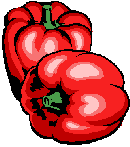|


Also call:
Garden Thyme
 | DESCRIPTION
|
The Thymes grows into a compact bush
about 30cm tall with leaves that are pungent and grey in colour. The
stems are slender with leaves that are pointed and small, and the flowers
that are pink, white or purple in colour. There is lemon Thyme but its
slightly different from the original Thyme as the lemon Thyme leaves are a
little bit bigger and greener in colour and has a lemon flavour.
 | HISTORY AND ORIGIN
|
The herb name came from the Greek which
means 'to fumigate' and they used it as a incense in their temple. The
Romans then introduced Thyme to the Europeans and the British, and from
there it was one of the most popular seasoning and medicine. Nowadays
in the modern days, most cough syrups contains the oil from the Thyme (Thymol)
because it has the antiseptic qualities.
 | BUYING AND STORAGE
|
For longer lasting of this Thyme herbs,
put it in cold water and keep in the refrigerator and well keep up to a
week. For more flavour, it is best to buy the dried Thyme leaves as it
comes whole and its small but it gives the attractiveness in the good
than the powder form.
 | PREPARATION AND USE
|
The stems of the fresh Thyme once been
washed can then be use in slow-cooking, casseroles, soups, and stews.
The leaves will fall off the stems once it is cooking and then be removed
from the dish before serving. The Thyme is a good ingredient in
making stuffings or any chicken, beef, herb breads and vegetables dishes as
it has a strong sharp character. Certain dishes like chicken,
shellfish and other seafoods, potatoes and veal can then use other type
variety like the lemon Thyme which gives a lemon tang flavour to it.
|




